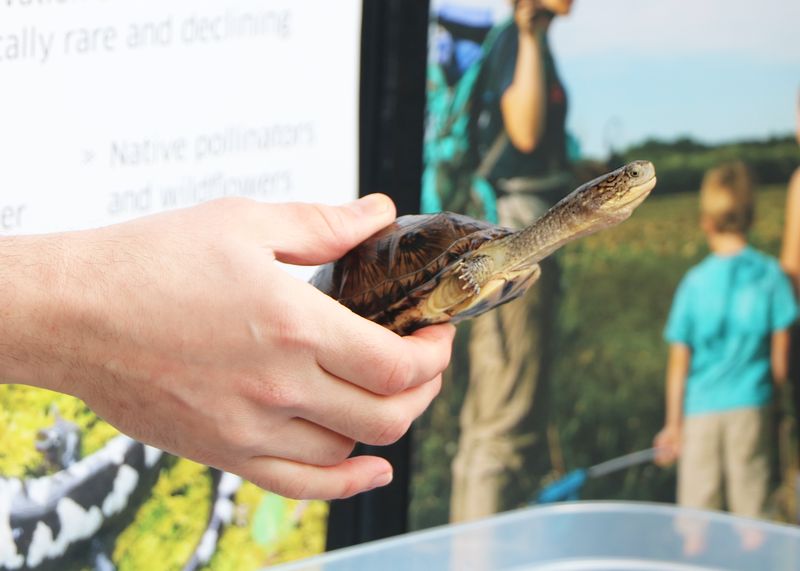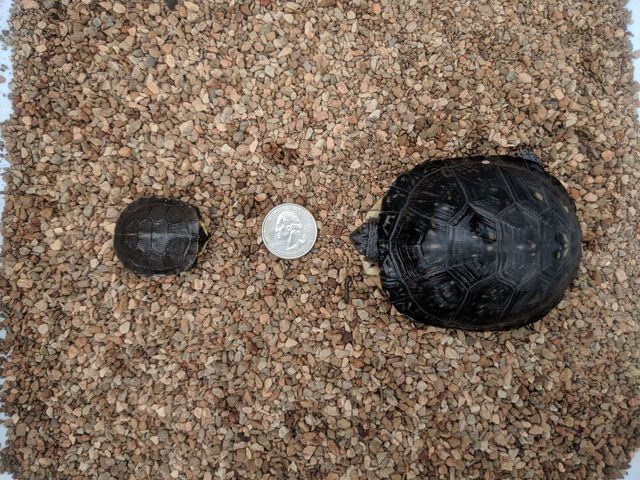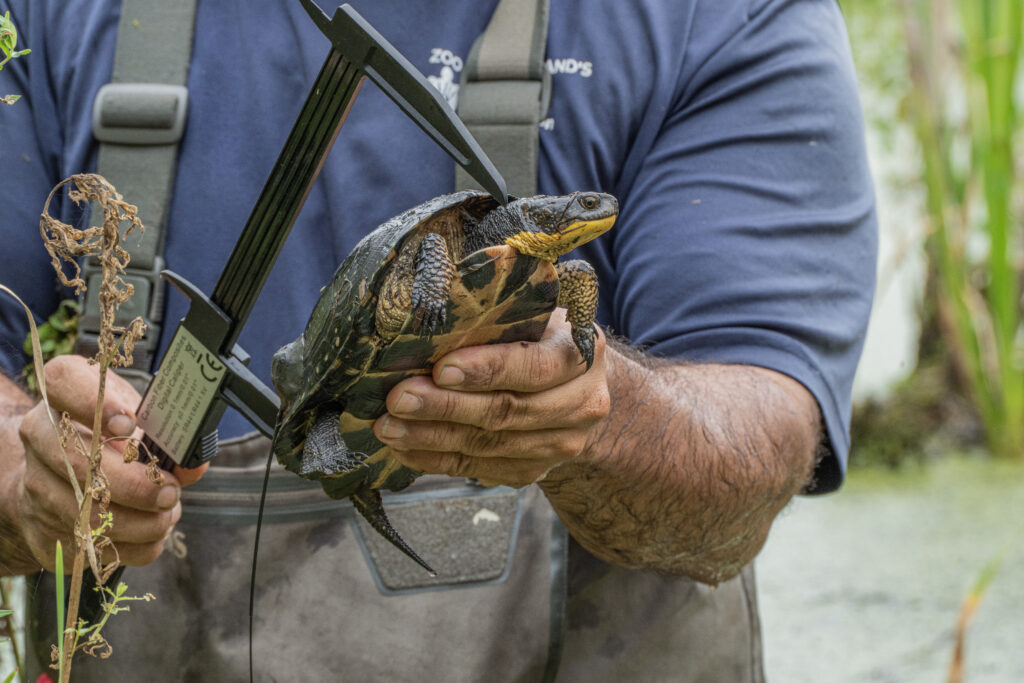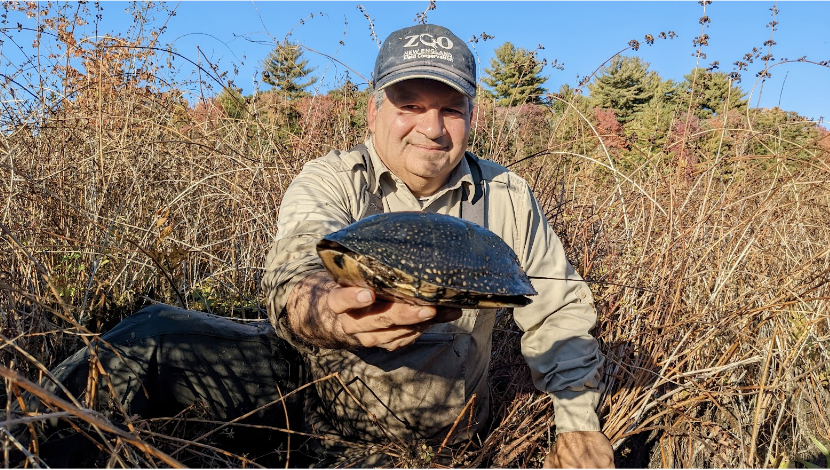
For many folks, their introduction to Zoo New England’s Field Conservation Department came with the charming, golden-throated smile of a Blanding’s turtle.
In 2003, Dr. Bryan Windmiller and colleagues started studying a small population of this threatened turtle at Great Meadows National Wildlife Refuge. The population had been studied and characterized in the 1970’s, so Bryan had a benchmark to compare the estimated population size in 2005: the same site that had supported ~135 adult Blanding’s turtles in the past had declined about 60%, to ~54 individuals. Even worse, most of the individuals Bryan was seeing were quite old; many had been marked in the 1970’s as adults, and there was little evidence of “juvenile recruitment,” which meant that young turtles were not surviving at a high enough rate to replace the aging adults.

Armed with permits from USFWS and MassWildlife, Bryan and colleagues began a long-term conservation management effort to support the beleaguered population. Researchers protected the turtles’ nests and, along with partners throughout the community, “headstarted” the hatchlings by captive-rearing them for about nine months and releasing them back to their natal population. By eating and growing over what would normally be the ‘hibernation’ period of their first year, and with eager caretakers providing them with pelleted food, these turtles are much larger than wild turtles their own age – providing a large survival boost to the <1 year-old turtles. Chipmunks and even bullfrogs can eat the smallest Blanding’s turtles; the hatchlings are only about 10g and the size of a quarter when born, but are released after headstarting at around 150 g (more like a double cheeseburger!)

In 2023, after 20 years of working with this population, we decided to take stock and assess what we’d accomplished. Two decades might sound like a long time to spend on just one population, and it is! Twenty years, thousands of sardine cans used as bait, more than 430 turtle-years of data on where and when the turtles move… but long-term monitoring is what’s required when you’re observing and managing a population that has such long generation times. Blanding’s turtles can live over 90 years, but they also don’t reach adulthood until about 18 to 20 years old, so patience is key. Luckily for us, when we conducted several analyses, we found exactly what we were hoping for: survival rates of both juveniles and adults are high, and the once-senescent population is now growing!

We’ve just published a paper that details these efforts and their successes in a special edition of Northeast Naturalist. A synopsis: our population estimates suggest that the number of Blanding’s turtles at Great Meadows has increased four to six-fold, anchoring the population for decades to come. This is supported by several population models and by how our trapping results have changed year-over-year! As we’ve trapped, using the same protocols, the number of Blanding’s turtles has been rising, and there are far more young, healthy turtles. This is great news, and we’re hopeful that some of our original headstarted juvenile “alumni” will be laying eggs soon, as they’re nearing adulthood.

This research highlights the value of long-term population restoration efforts and the impact that these projects can have on rare species conservation. We’re grateful to everyone who has worked on this worthwhile project with us– and if you check out the paper and have questions, feel free to reach out!
See full study details here: McElroy, C.L, Windmiller, B., Berkholtz, J., Wilder, E., Welch, J., Shoemaker, K., Kamm, M.D. 2024. Recovery of a Blanding’s Turtle Population Through Nest Protection and Headstarting. Northeastern Naturalist, 31(Special Issue 12):E25–E42
